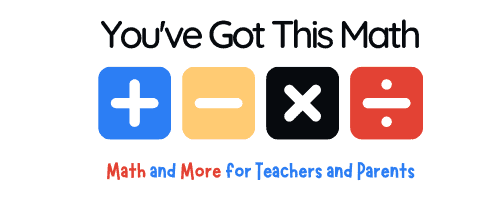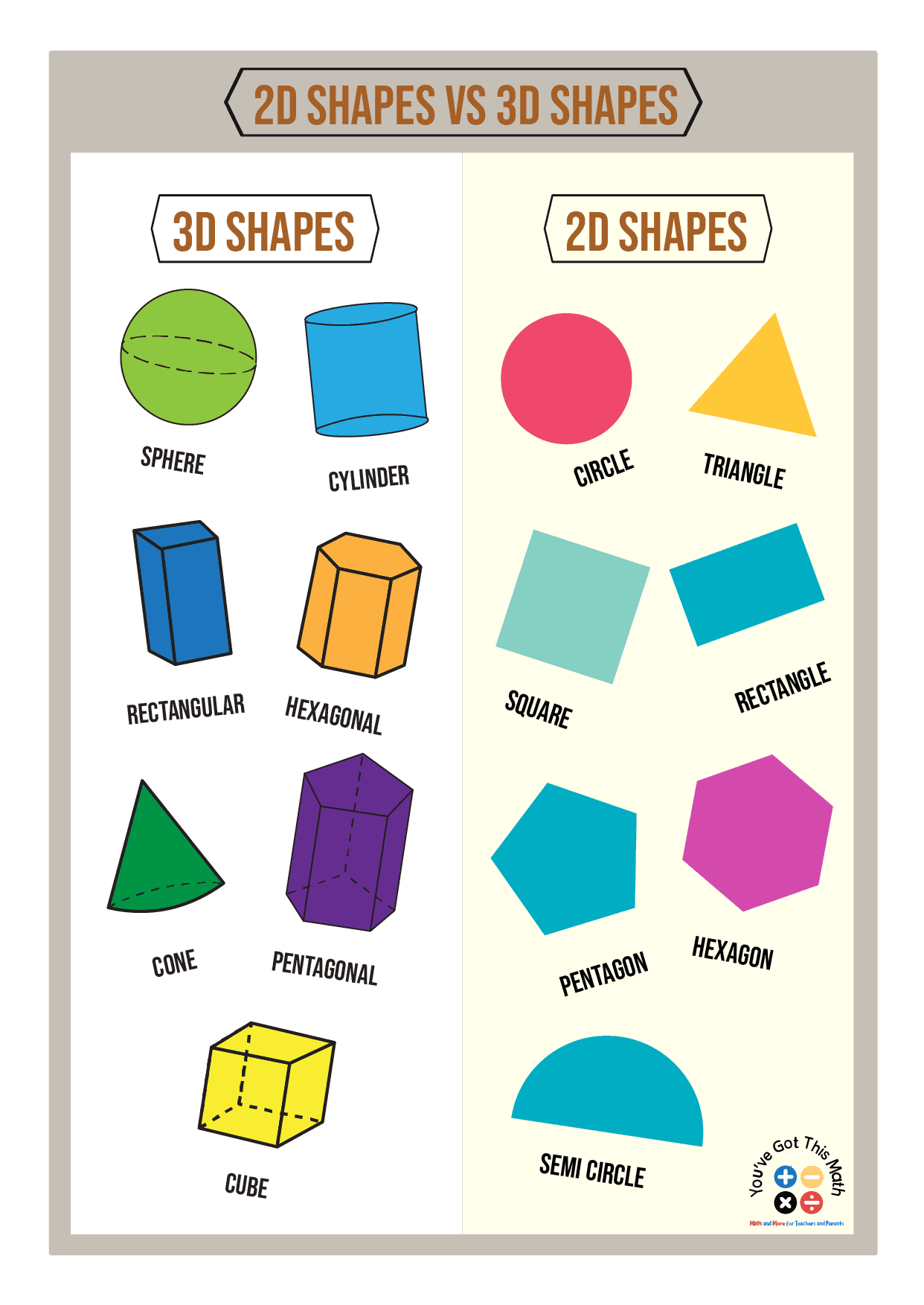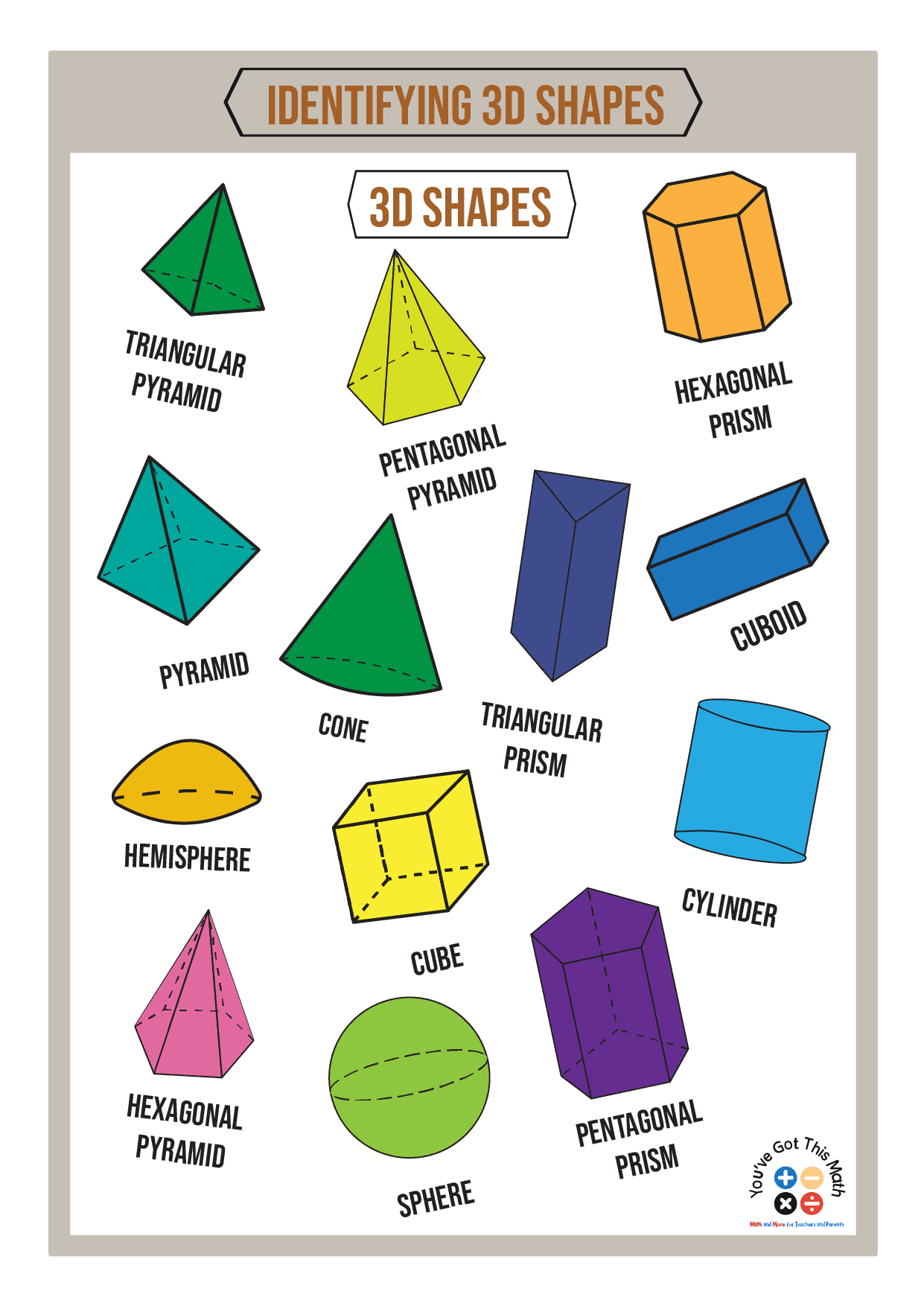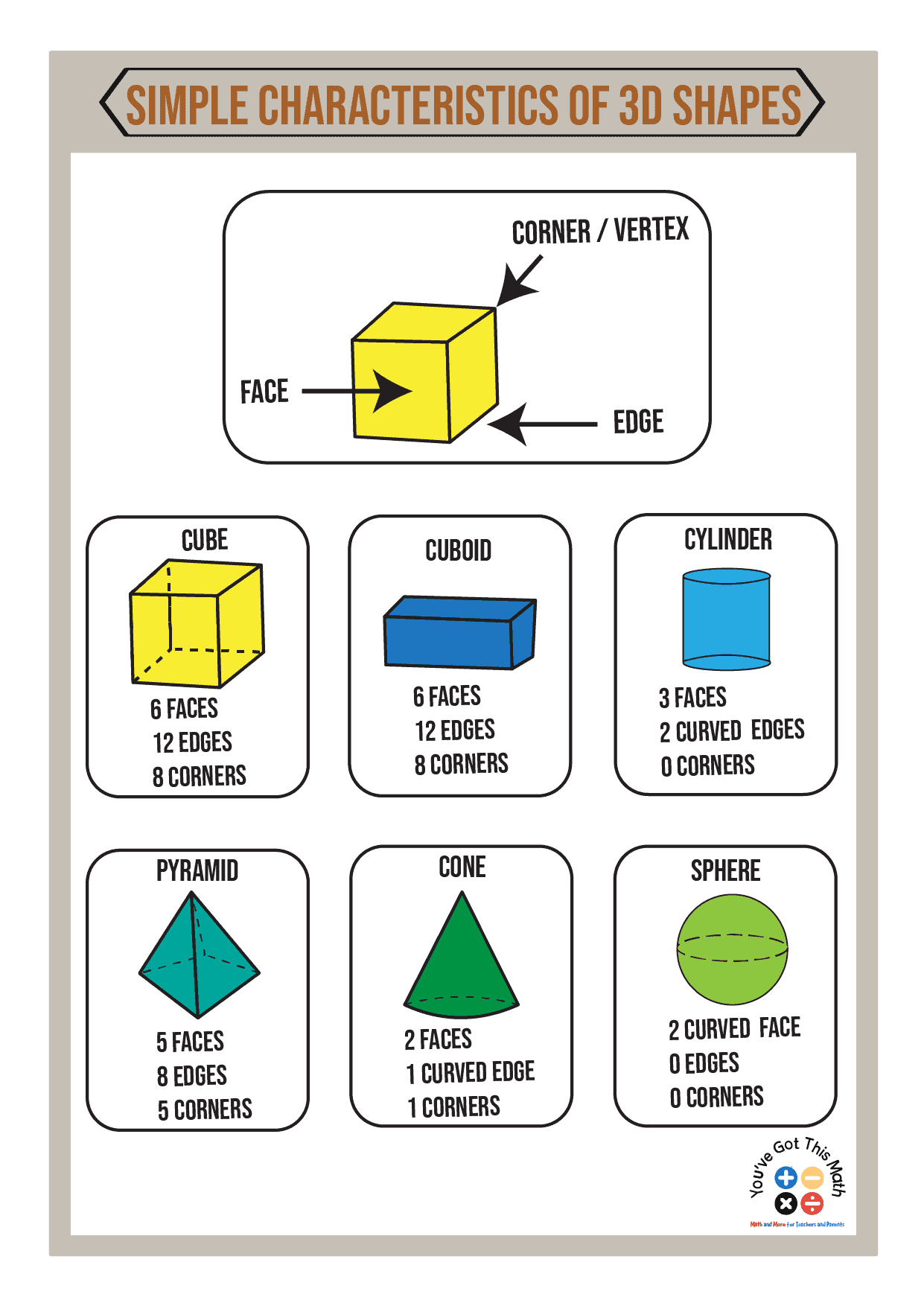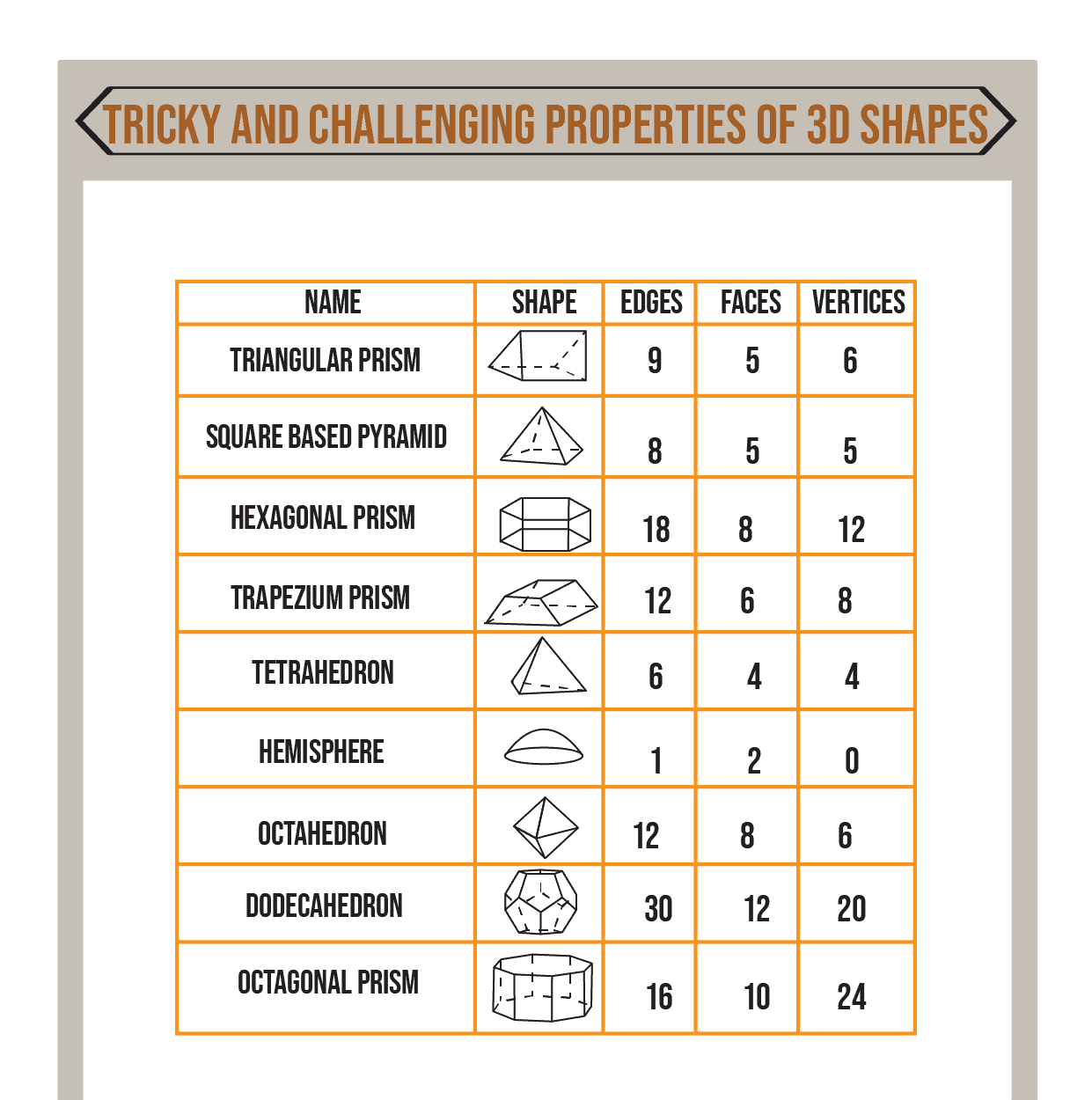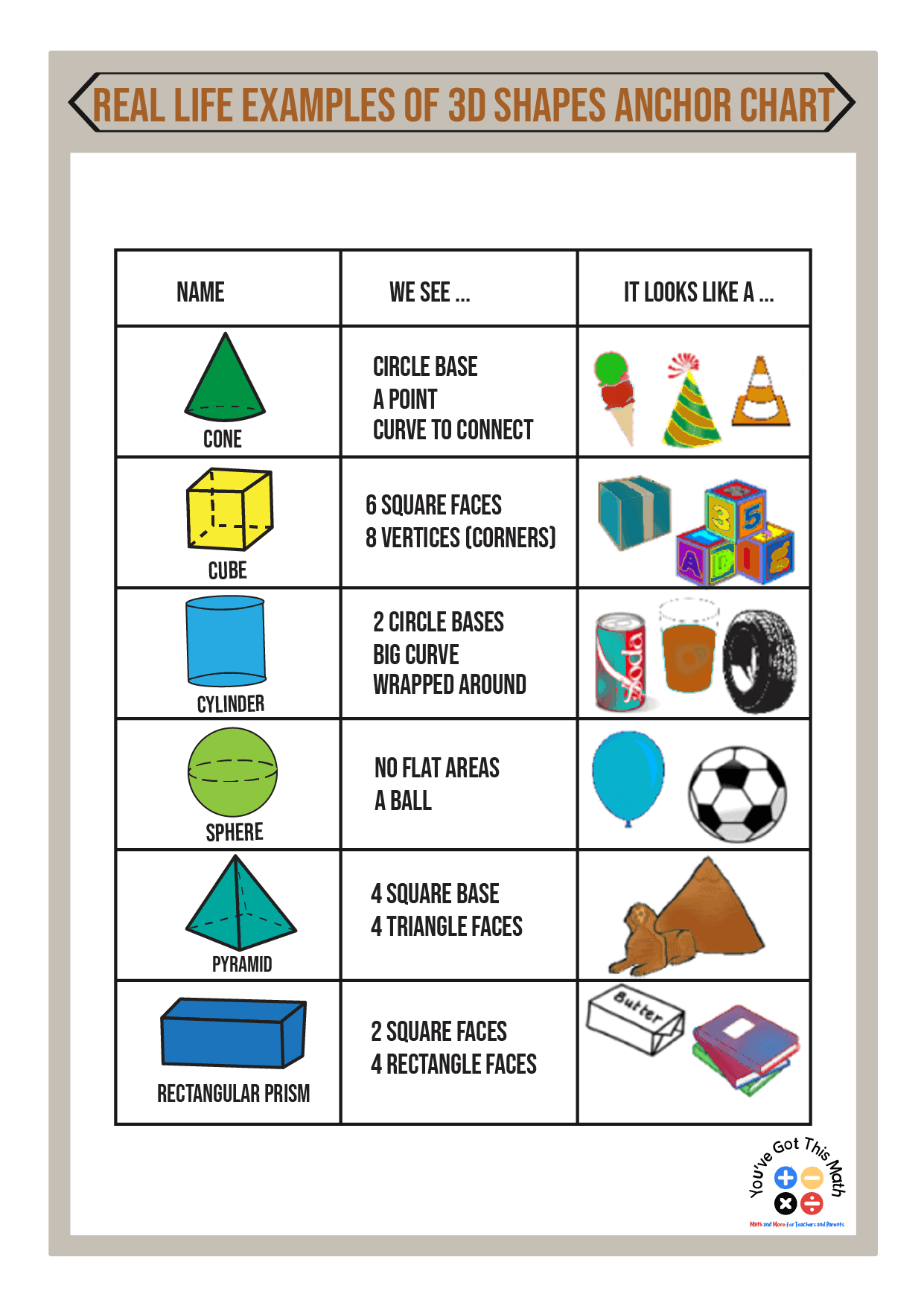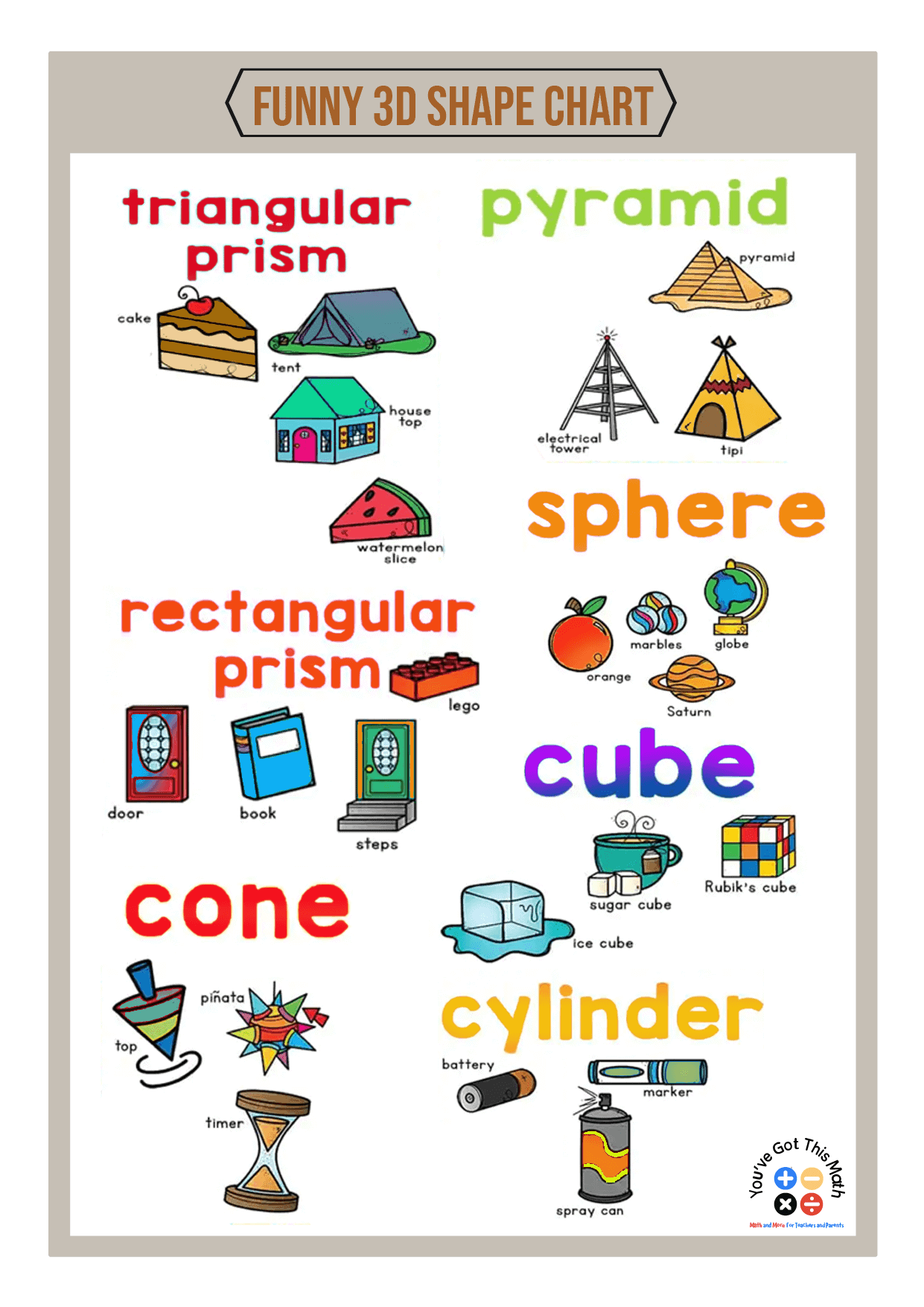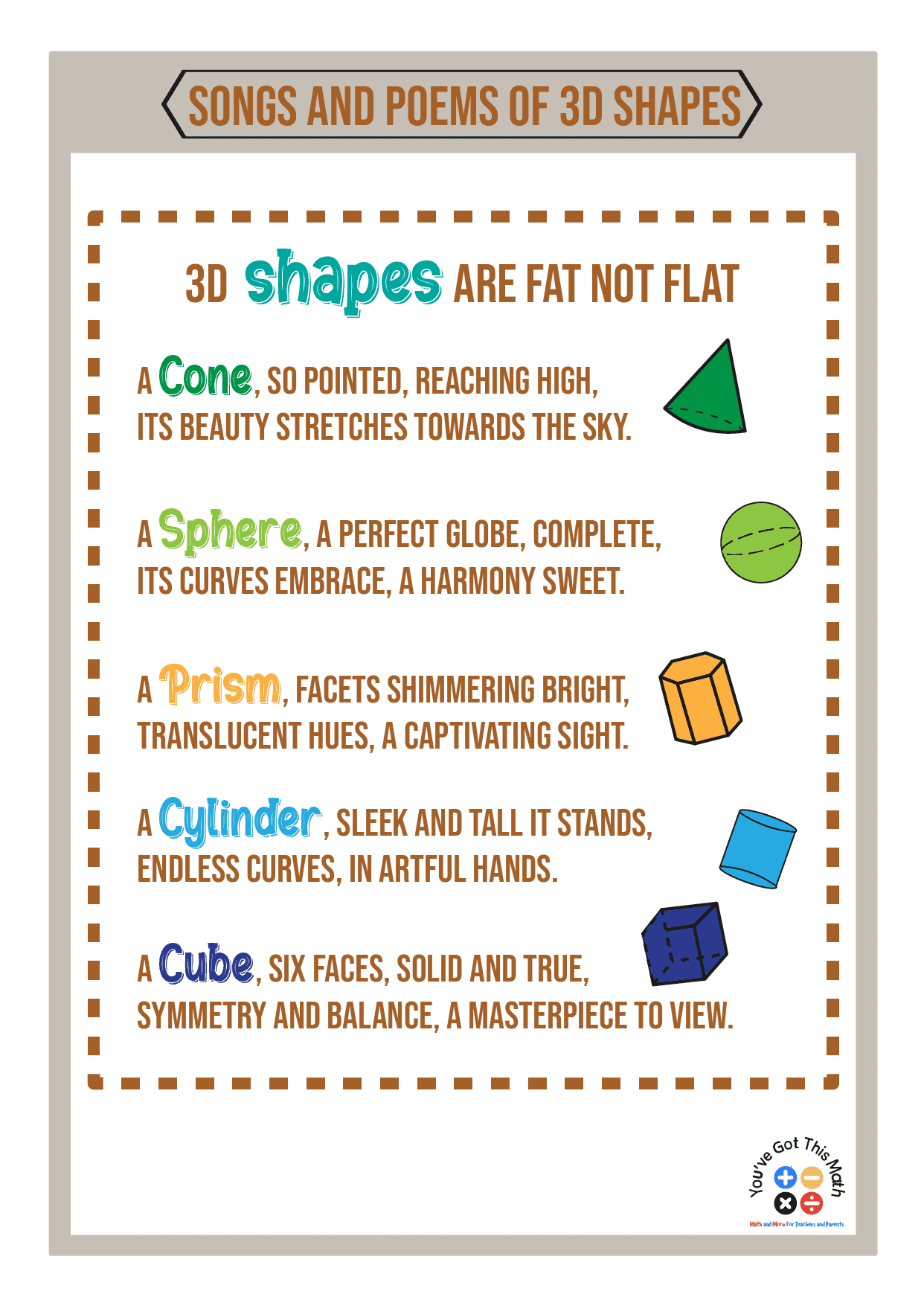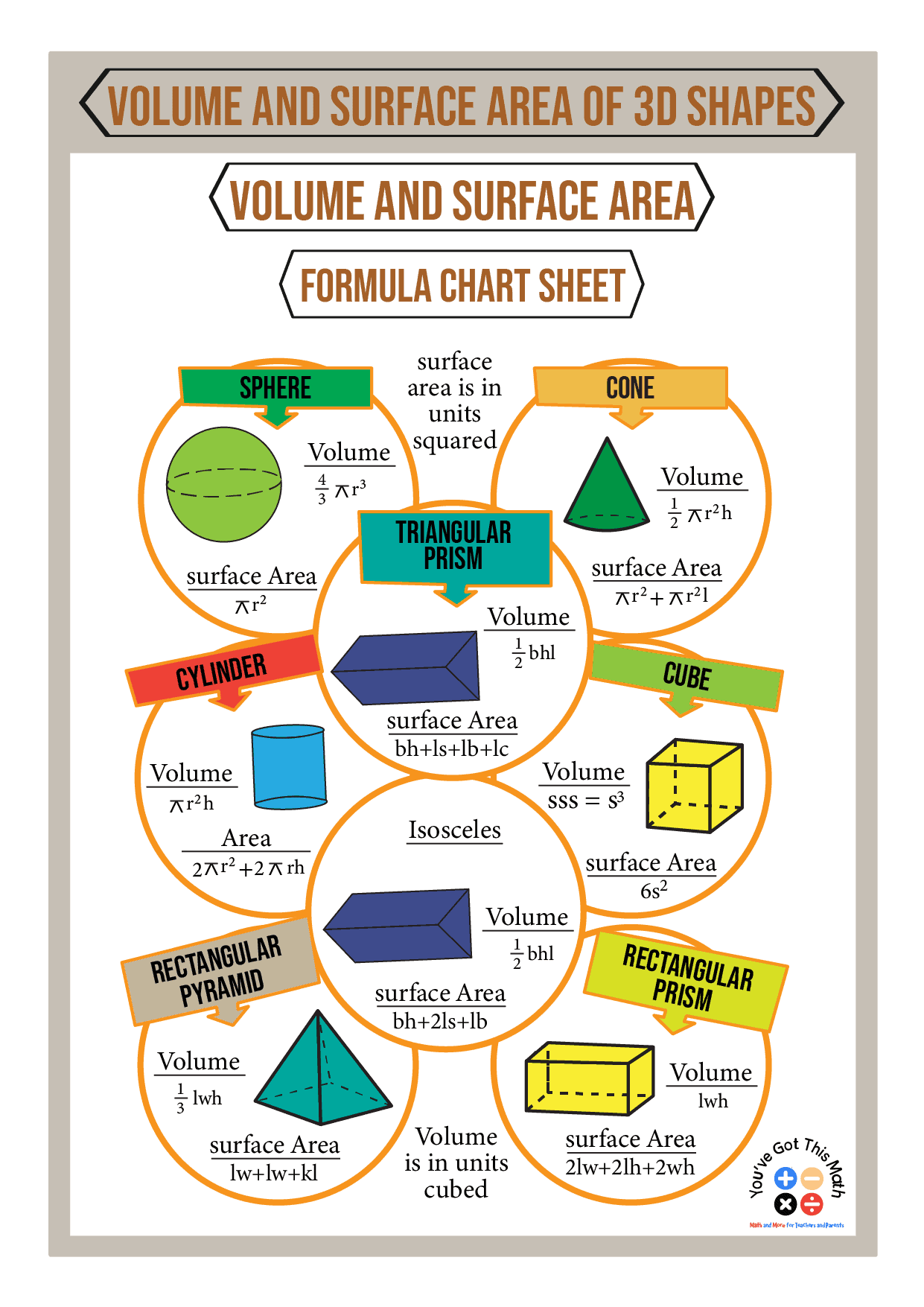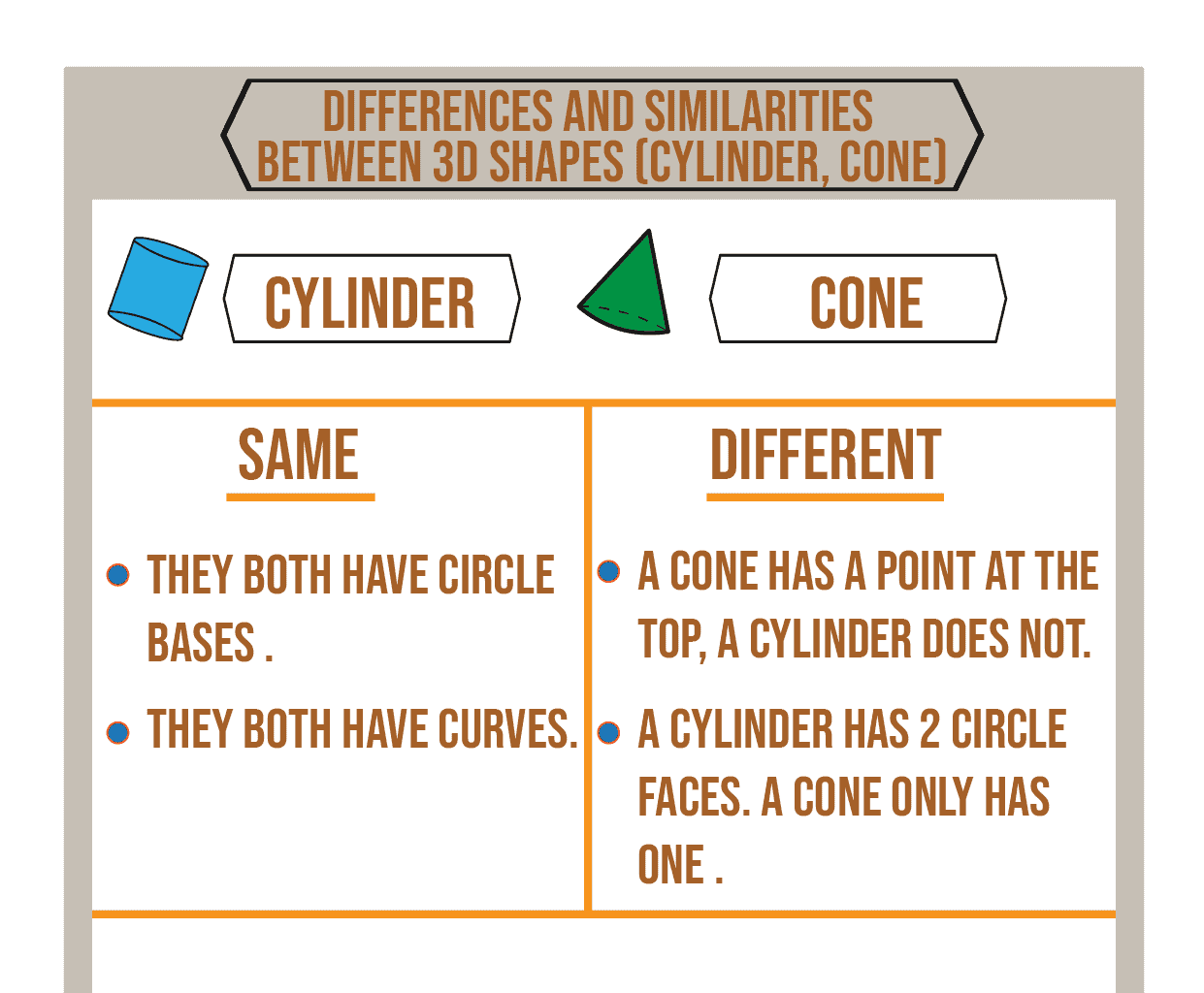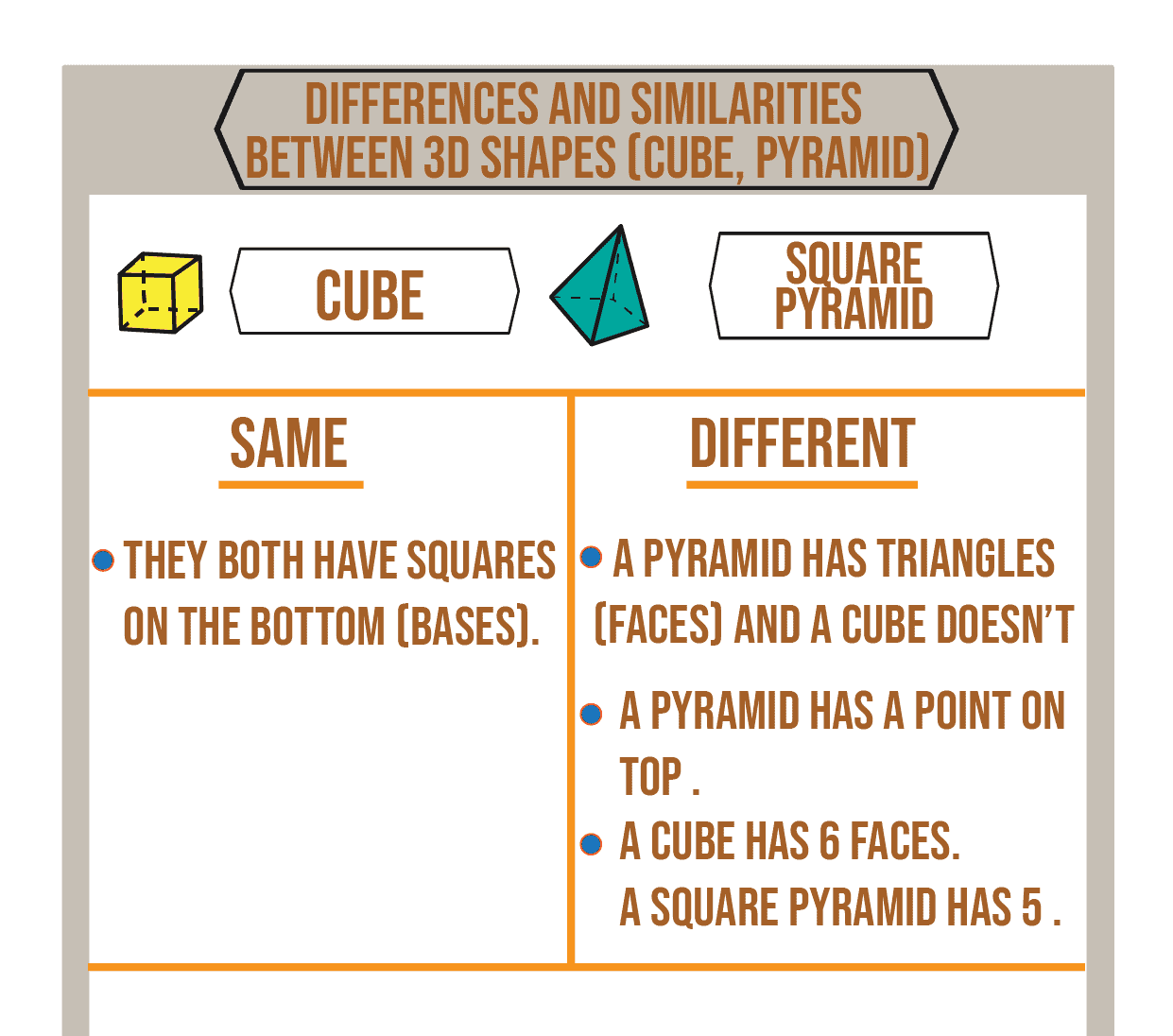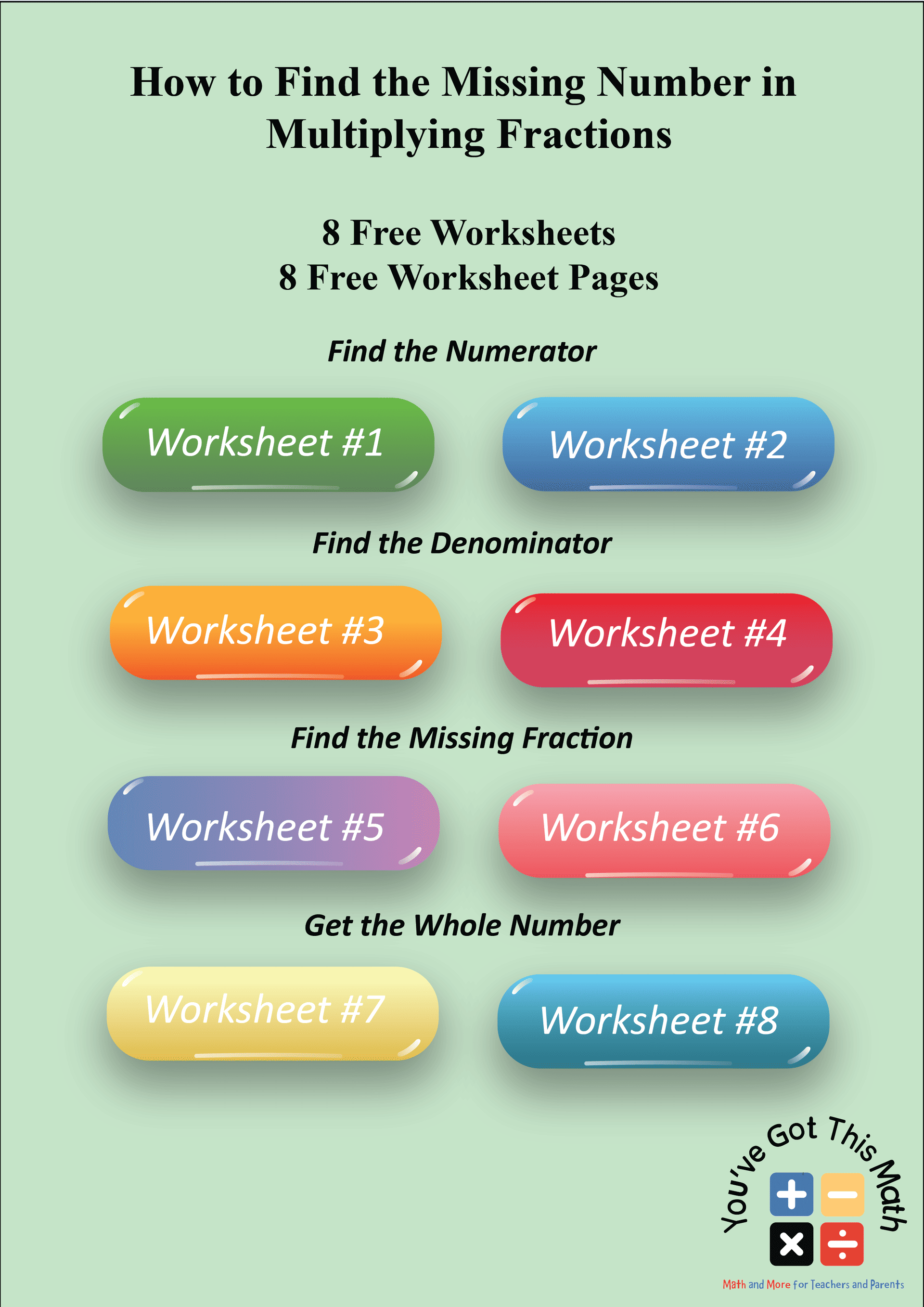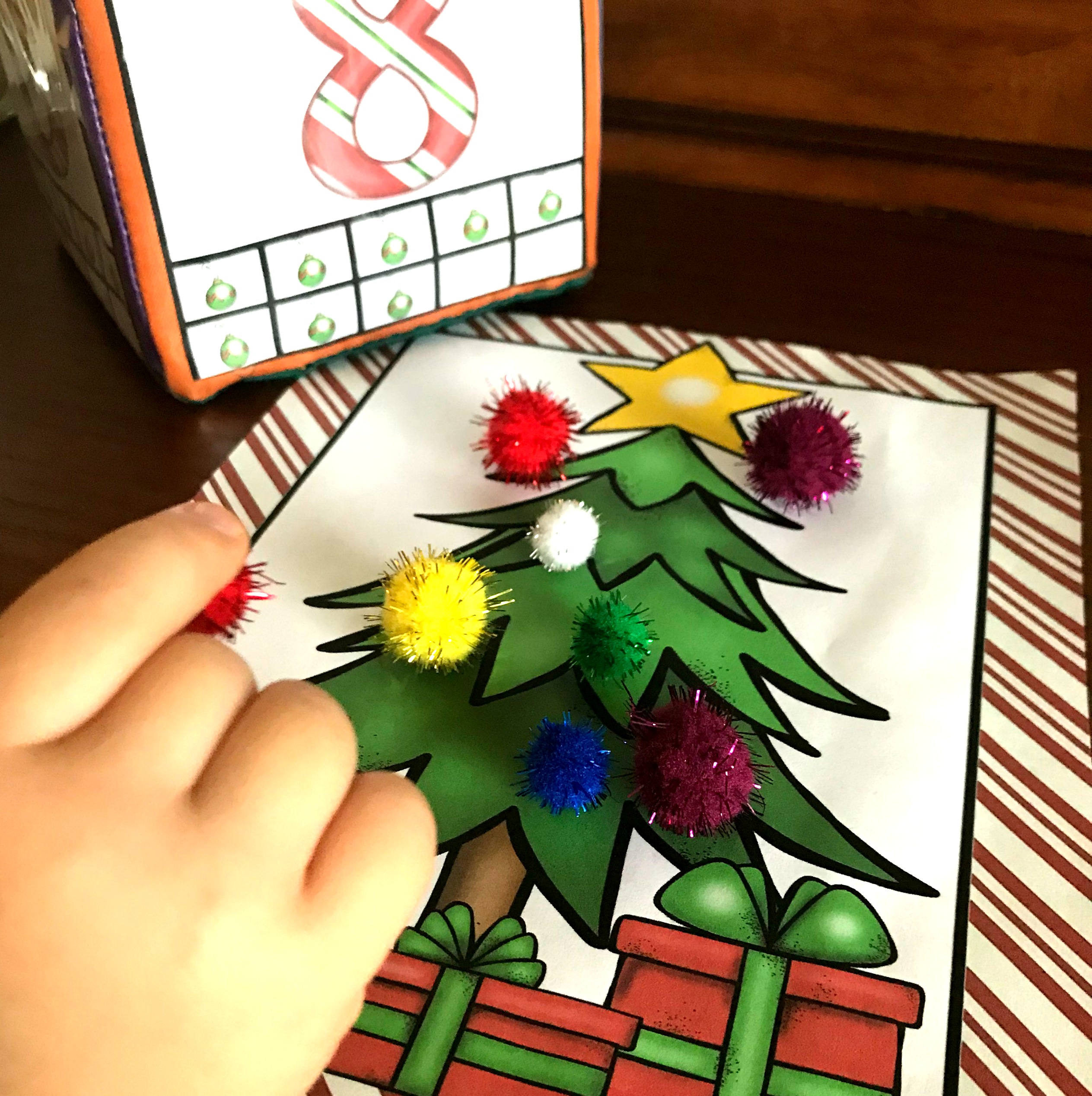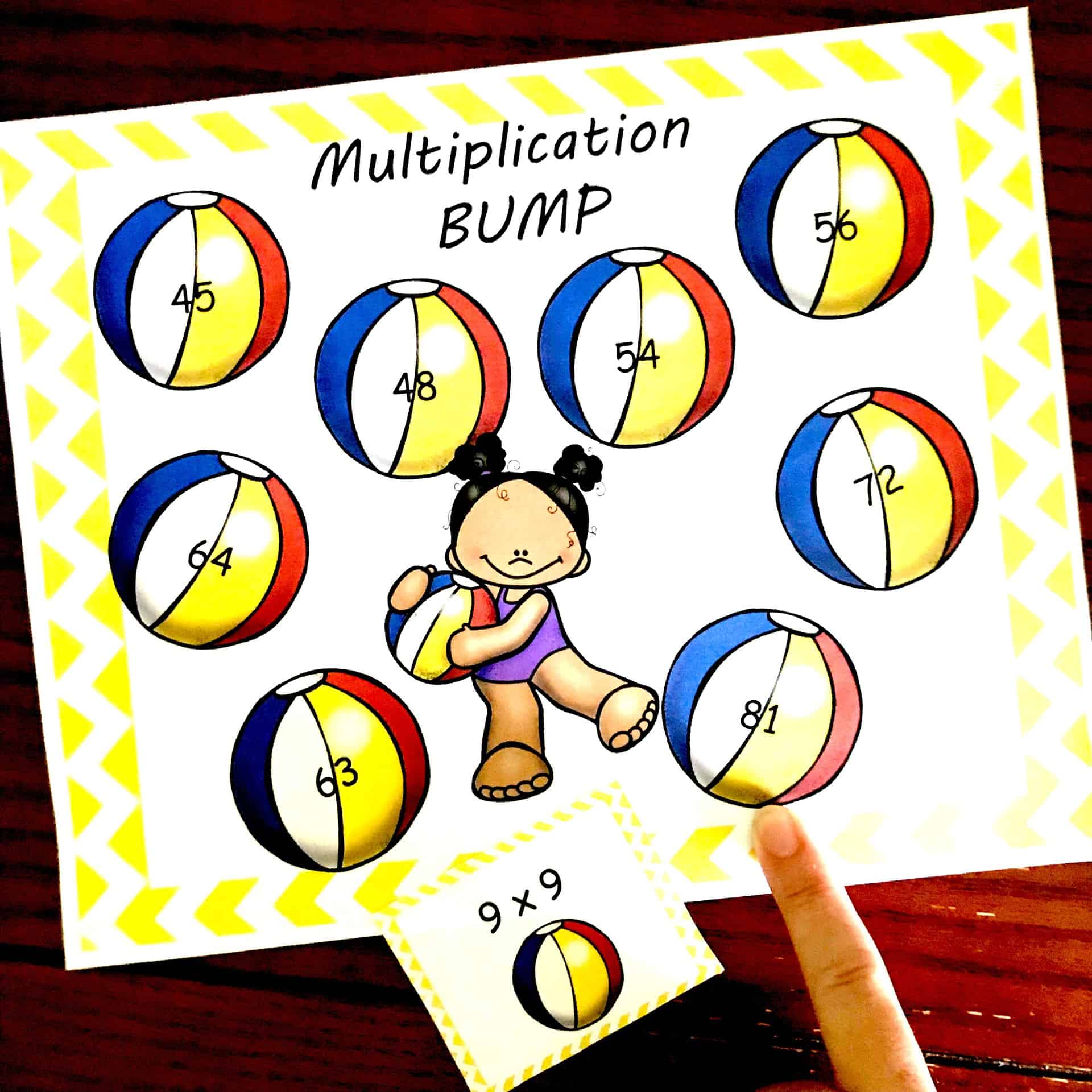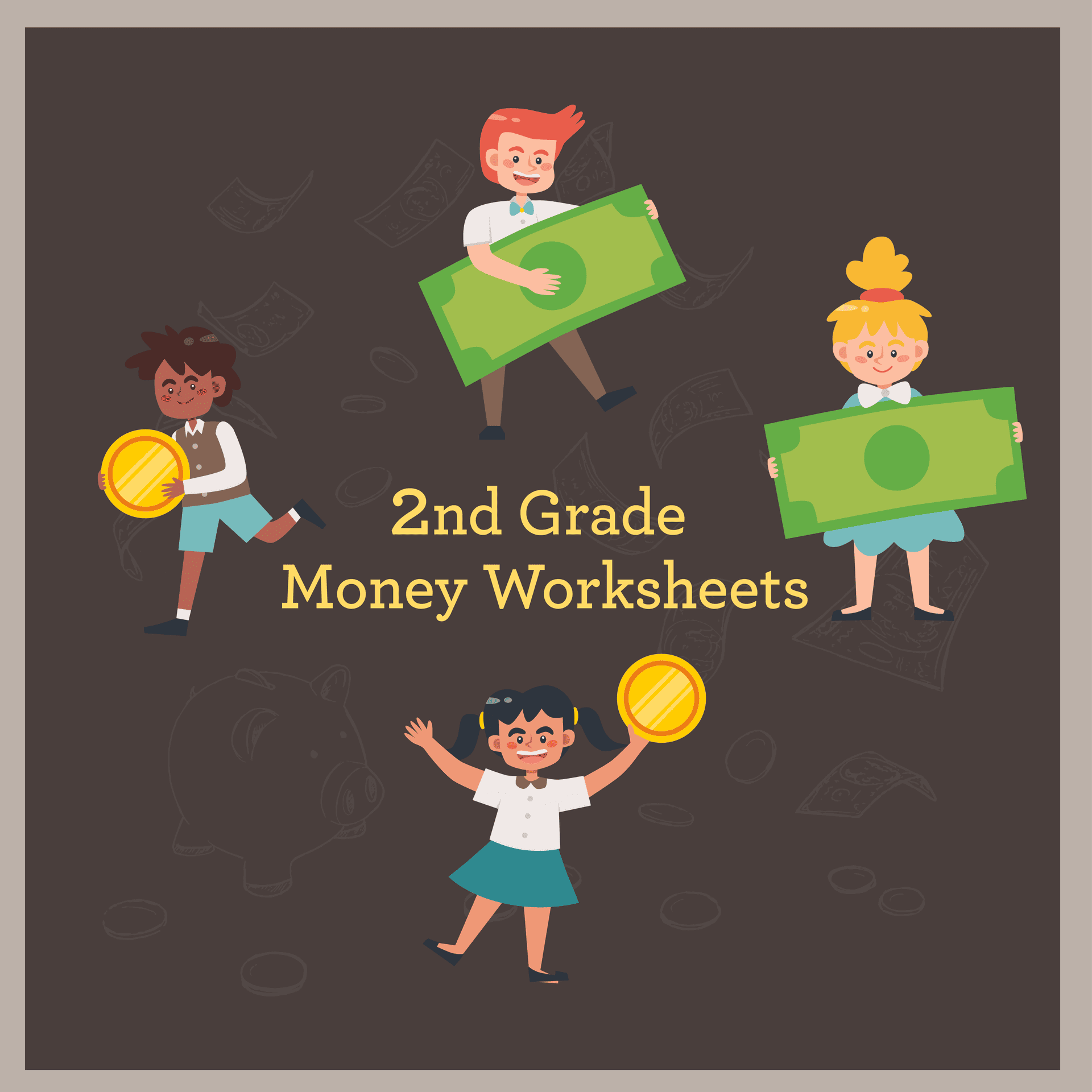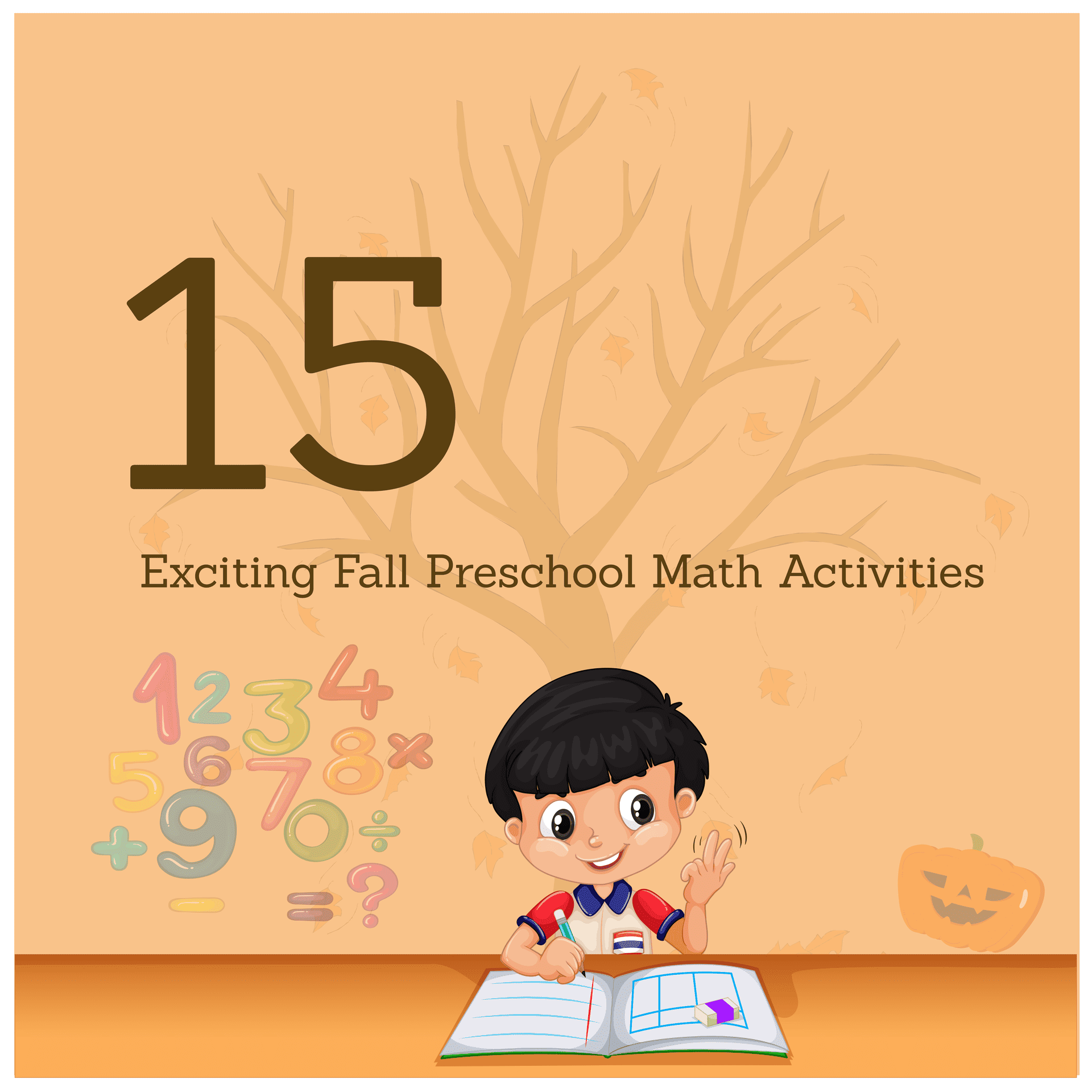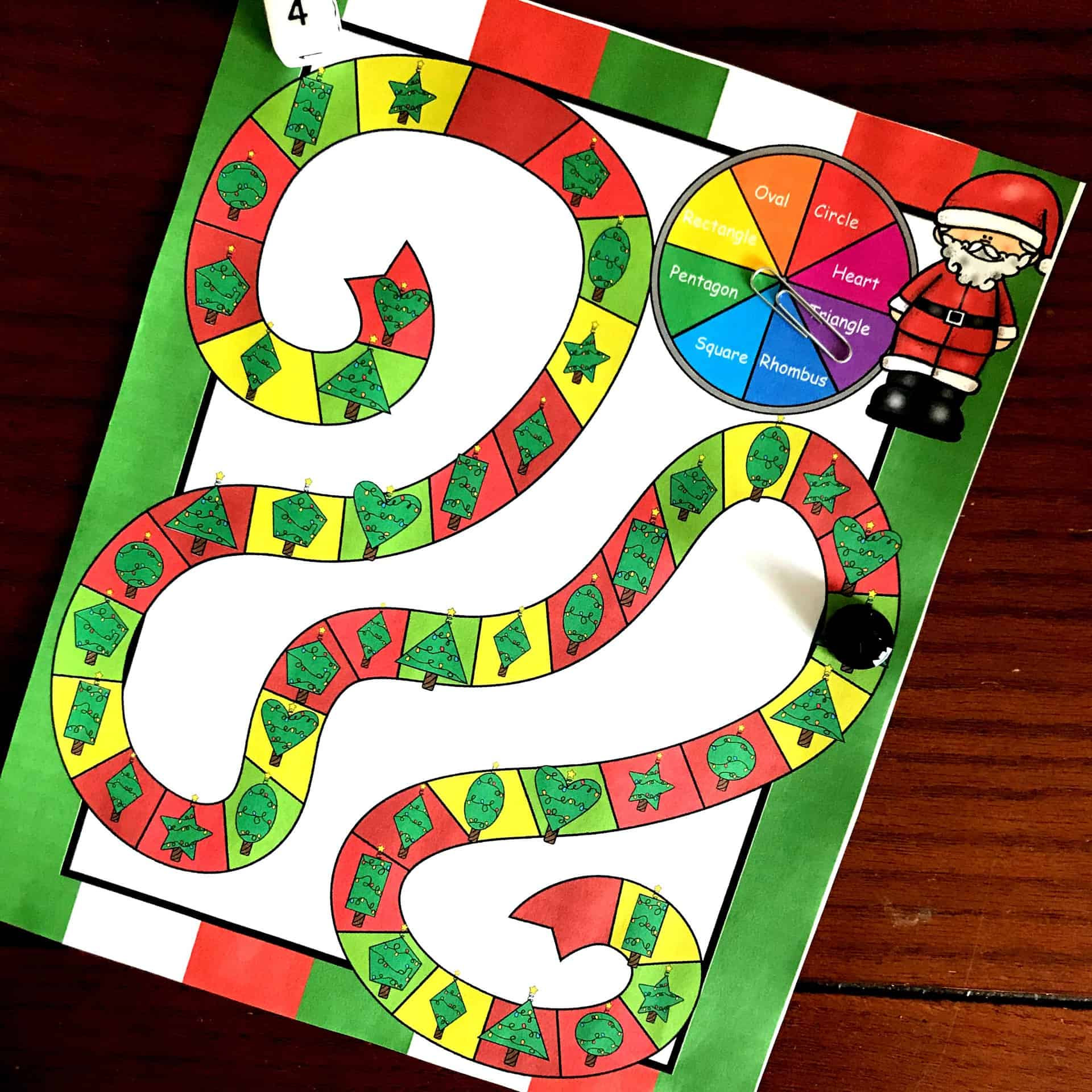10 Fun Examples of 3D Shapes Anchor Chart
Buy 2700+ Pages Math Games & Activities (PreK-2nd Grade)
This 3D shapes anchor chart with examples will help to visualize and understand 3D shapes. 1st-3rd grade students will learn basic shapes and can improve their basic math skills with our free printable 3D shapes anchor chart with examples.
10 Exciting 3D Shapes Anchor Chart Examples
Please download the following worksheet on 3D shapes anchor chart with examples and practice them.
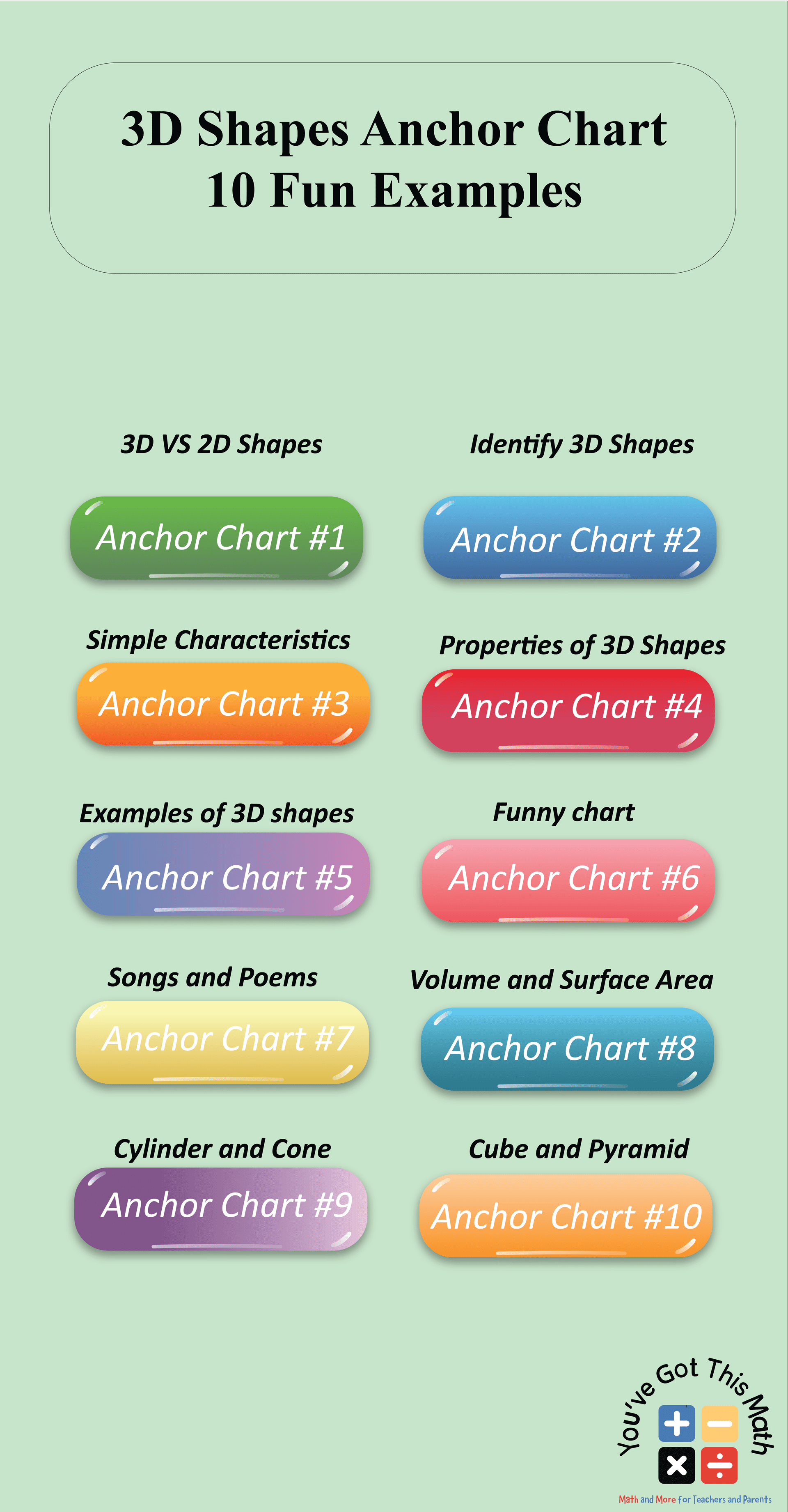
2D Shapes Vs 3D Shapes Anchor Chart
The first activity is based on identifying 2D and 3D shapes for kindergarten students.
In the following anchor chart, we indicate whether the shape is 2D or 3D.
Identifying 3D Shapes Anchor Chart
In this chart, the names and figures of the 3D shapes are given. Recognize these solid or 3D shapes through this anchor chart. See each shape, correctly name each one, and then write it down if needed.
Simple Characteristics of 3D Shapes
In this chart, mention the simple characteristics of 3D shapes. The three dimensions of a three-dimensional shape are length, width, and depth.
These dimensions give these shapes the characteristics of faces, edges, and vertices.
Tricky and Challenging Properties of 3D Shapes Anchor Chart
In the previous chart, children mentioned easy and simple 3D shape properties such as cubes, cones, pyramids, etc.
In this anchor chart, you have the characteristics of a triangular prism, hexagonal prism, etc.
Real-Life Examples of 3D Shapes Anchor Chart
In this chart, the 3D shapes and their real-life examples are mentioned.
Funny 3D Shape Chart with Real Objects
This chart contains some funny elements of 3D shapes that we regularly use or see in our daily lives. For example, come out of your house and see the shape and design of your house.
Songs and Poems of 3D Shapes
This type of song and poem helps kids memorize 3D shapes and their properties. Also, the examples help to recognize the shapes.
Volume and Surface Area of 3D Shapes Anchor Chart
In this chart, the formulas for the volume and surface area of 3D shapes are provided.
The overall area of the space that the thing occupies is mostly revealed by its surface area.
On the other hand, we can determine an object’s overall storage capacity in space by measuring its volume.
Differences and Similarities between 3D Shapes (Cylinder, Cone)
We mention the differences and similarities between a cylinder and a cone so that the students can memorize them.
Differences and Similarities Between 3D Shapes (Cube, Pyramid)
To help the kids memorize them, we point out the differences as well as the similarities between a cube and a pyramid.
Download Free 3D Shapes Anchor Chart
Download the following combined PDF and enjoy your practice session.
So today, we’ve discussed 3D shapes anchor charts with examples using the concepts of identifying 2D and 3D shapes, real-life examples. Download our free worksheets, and after practicing these worksheets, students will surely improve their mathematical skills and have a better understanding of 3D shapes.

Hello!
Welcome to my profile. I have done my graduation from Ahsanullah University Of Science and Technology in Electrical and Electronic Engineering. Currently, I have started working as a Content Developer for “You’ve got this math” at SOFTEKO. As an Electric engineer, I always try to achieve innovative knowledge. I have an interest in research articles on different ideas. Also, I really like to solve innovative and mathematical problems. I really hope I’ll do better in the future as an Engineer.
